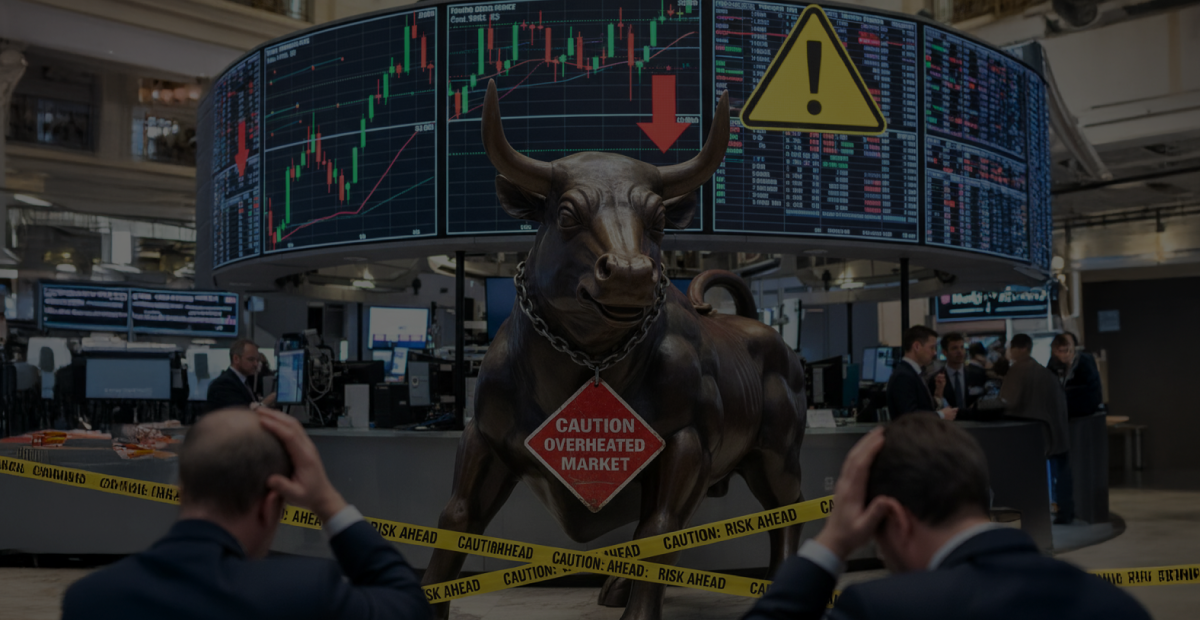The equity markets concluded a pivotal week navigating the delicate balance between celebrating monetary accommodation and absorbing cautionary guidance from Federal Reserve Chair Jerome Powell. The S&P 500 fell to 6,637 points on September 24, 2025, losing 0.30% from the previous session, marking a measured retreat that speaks more to prudent profit-taking than fundamental concern.
This week’s action crystallized around a fascinating dichotomy: while markets have delivered impressive gains of 15.98% compared to the same time last year, Powell’s Tuesday remarks about “highly valued” stocks introduced a sobering counterpoint to the prevailing optimism. The S&P 500 fell about 0.6%, and the tech-heavy Nasdaq Composite lost almost 1% following his comments, demonstrating how even subtle shifts in Fed rhetoric can ripple through risk assets.
What distinguished this week was not just the immediate reaction to Powell’s valuation concerns, but the underlying strength that has characterized much of September. The market has notched almost 30 records in 2025, eclipsing the average year-end analyst forecast, a remarkable achievement that underscores the fundamental momentum driving equities despite periodic headwinds.
The technology sector, while bearing the brunt of Tuesday’s decline, continues to demonstrate the structural resilience that has defined its outperformance. Questions remain on whether the AI trade can continue powering U.S. equities given the risks tied to elevated market valuations, yet the sector’s ability to recover from intraday weakness suggests investors remain committed to the long-term growth narrative.
Perhaps most intriguing is the market’s technical behaviour during this period of heightened scrutiny. It’s been more than five months since the S&P 500 suffered back-to-back declines of at least 1%, a statistic that highlights both the extraordinary consistency of the current bull run and the potential energy building for a more meaningful correction.
Small-cap stocks provided one of the week’s more compelling stories, with the Russell 2000 climbing within striking distance of its record closing high, now around 1% away from its closing all-time high record notched in November 2021. This development suggests that the benefits of the Fed’s accommodative stance are beginning to broaden beyond large-cap growth names.
The fundamental question emerging from this week’s action centres not on whether the market can continue advancing, but rather on the sustainability of current valuations in an environment where even the Fed is expressing caution. Over the past month, the index has climbed 3.07%, a pace that, while impressive, may require more selective stock picking as broad-based momentum shows signs of maturing.
As September draws to a close, markets find themselves at a unique inflection point. The combination of accommodative monetary policy, robust corporate fundamentals, and elevated valuations creates a complex environment that rewards both optimism and caution. The week’s trading action suggests that while the bull market’s structural integrity remains intact, investors are becoming increasingly discerning about where and how they deploy capital in this mature cycle.
Disclaimer: The views expressed in this article are those of the author at the date of publication and not necessarily those of Dominion Capital Strategies Limited or its related companies. The content of this article is not intended as investment advice and will not be updated after publication. Images, video, quotations from literature and any such material which may be subject to copyright is reproduced in whole or in part in this article on the basis of Fair use as applied to news reporting and journalistic comment on events.


